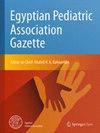The effects of intraoperative use of blue dyes in pediatric pilonidal sinus disease—a retrospective exploratory cohort study
IF 0.5
Q4 PEDIATRICS
引用次数: 0
Abstract
Intraoperative use of methylene blue has been shown to reduce postoperative complications and recurrence rates in adults. It has however not been assessed if these beneficial effects would also apply to pediatric pilonidal sinus disease with its high recurrence rates. We, therefore, aimed to assess its effects on complications and recurrences in our retrospective exploratory cohort study. Of 55 consecutive children treated in our centre between January 2009 and December 2020, 48 were retrospectively included. We used logistic regression with a priori chosen predictors of intraoperative use of blue dyes, previous surgery for pilonidal sinus disease, and the presence of comorbidities on the composite outcome of complications and recurrence. Cramér’s V was used to explore associations between the use of blue dyes and the extent of resection. The median age in our cohort was 15.3 years. Five patients were below 2 years of age, and 24 (50%) of them were males. Chronic diseases were present in 13 (27%) patients, eight had previously been operated on for pilonidal sinus disease, and blue dyes were used in 34 patients (71%). Their intraoperative use was linked to the composite outcome with an odds ratio of 5.41 (95% confidence interval (CI) 1.52–25.34, P = 0.017) as were comorbidities with an odds ratio of 1.86 (95% CI 1.18–3.25, P = 0.014), but not re-do surgery (odds ratio 2.94 (95% CI 0.37 23.42, P = 0.3)). The use of blue dyes was associated with larger resections (Cramér’s V 0.556 (95% CI 0.329–0.74)). The intraoperative use of blue dyes was negatively associated with complications and recurrences in pediatric pilonidal sinus disease. However, if blue dyes were used, the extent of resection was also larger. Larger resections had been shown before to be associated with complications and recurrences, too. This potential interaction requires further elucidation in future studies.小儿朝天鼻窦疾病术中使用蓝色染料的影响--一项回顾性探索性队列研究
事实证明,术中使用亚甲蓝可以减少成人的术后并发症和复发率。然而,这些有益效果是否也适用于复发率较高的小儿朝天鼻窦疾病,目前尚未进行评估。因此,我们在回顾性探索性队列研究中评估了该疗法对并发症和复发的影响。在 2009 年 1 月至 2020 年 12 月期间,我们中心连续收治了 55 名患儿,其中 48 名被纳入回顾性研究。我们采用了逻辑回归法,并预先选择了术中使用蓝色染料、曾接受过朝天鼻窦疾病手术以及是否存在并发症和复发等综合结果的预测因素。Cramér's V用于探讨蓝色染料的使用与切除范围之间的关系。我们队列中的中位年龄为 15.3 岁。5名患者年龄小于2岁,其中24人(50%)为男性。13名患者(27%)患有慢性疾病,8名患者曾因朝天鼻窦疾病接受过手术,34名患者(71%)使用了蓝色染料。术中使用蓝色染料与综合结果相关的几率比为 5.41(95% 置信区间 (CI) 1.52-25.34,P = 0.017),与合并症相关的几率比为 1.86(95% CI 1.18-3.25,P = 0.014),但与再次手术无关(几率比为 2.94(95% CI 0.37-23.42,P = 0.3))。使用蓝色染料与较大的切除范围有关(Cramér's V 0.556 (95% CI 0.329-0.74))。术中使用蓝色染料与小儿朝天鼻窦疾病的并发症和复发呈负相关。不过,如果使用蓝色染料,切除范围也会更大。以前曾有研究表明,较大的切除范围也与并发症和复发有关。这种潜在的相互作用需要在今后的研究中进一步阐明。
本文章由计算机程序翻译,如有差异,请以英文原文为准。
求助全文
约1分钟内获得全文
求助全文
来源期刊

Egyptian Pediatric Association Gazette
PEDIATRICS-
自引率
0.00%
发文量
32
审稿时长
9 weeks
期刊介绍:
The Gazette is the official journal of the Egyptian Pediatric Association. The main purpose of the Gazette is to provide a place for the publication of high-quality papers documenting recent advances and new developments in both pediatrics and pediatric surgery in clinical and experimental settings. An equally important purpose of the Gazette is to publish local and regional issues related to children and child care. The Gazette welcomes original papers, review articles, case reports and short communications as well as short technical reports. Papers submitted to the Gazette are peer-reviewed by a large review board. The Gazette also offers CME quizzes, credits for which can be claimed from either the EPA website or the EPA headquarters. Fields of interest: all aspects of pediatrics, pediatric surgery, child health and child care. The Gazette complies with the Uniform Requirements for Manuscripts submitted to biomedical journals as recommended by the International Committee of Medical Journal Editors (ICMJE).
 求助内容:
求助内容: 应助结果提醒方式:
应助结果提醒方式:


